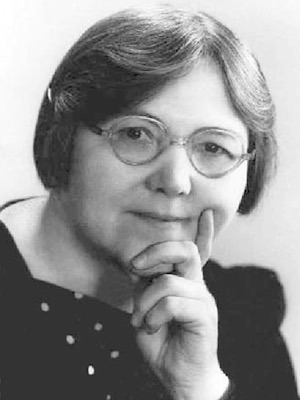Mary Walker

Mary Broadfoot Walker (1888–1974) was a Scottish physician
Whilst working at the Poor Law Service in London, Walker noticed that the symptoms and signs of myasthenia gravis had some similarities with curare poisoning. She injected physostigmine subcutaneously into a patient with severe myasthenia and demonstrated that it caused temporary improvement of symptoms. Her n=1 findings were initially met with skepticism in 1934.
A year later she demonstrated the demonstrated the dramatic effect of the better tolerated neostigmine to the clinical section of the Royal Society of Medicine (1935). She detailed the treatment of three cases in her 1935 MD thesis Contribution to the study of Myasthenia Gravis
Walker also published the first report demonstrating the relationship of hypokalaemia with familial periodic paralysis (1935).
Dr. Mary B. Walker was a shy, unobtrusive and almost self-effacing physician. However, she was intense, thoughtful, and perceptive in her analysis of patient problems. She was never appointed into the grandeur of any research institution or even a major hospital. She maintained correspondence with many of the people she had treated for myasthenia gravis and published a leading editorial article in the British Medical Journal shortly before she died.
Biography
- Born on April 17, 1888 in Croft-an-Righ, Wigtown, Scotland
- 1913 – MB ChB, University of Edinburgh (Edinburgh College of Medicine for Women)
- 1916-1919 – RAMC served in Malta and Salonika
- 1920-1936 – Assistant Medical Officer in the “Poor Law Service” based at St. Alfege’s Hospital, Greenwich, London
- 1932 – MRCP(London); worked at St Leonard’s Hospital, Shoreditch; St Francis’ Hospital, Dulwich; and St Benedict’s Hospital, Tooting.
- 1934 – Whilst working at St Alfege’s Hospital, Walker discovered that the subcutaneous injection of physostigmine could temporarily reverse the muscle weakness found in patients suffering from myasthenia gravis. She published a letter on the matter, the ‘Treatment of myasthenia gravis with physostigmine‘ in the Lancet on June 2, 1934
- 1935 – MD (Edinburgh). The first of 3 cases described in the 1934 publication formed the bases of her MD thesis at the University of Edinburgh: Contribution to the study of Myasthenia Gravis – for which she received the Thesis Gold Medal from the Faculty of Medicine of Edinburgh University. Dr. Walker ended her MD thesis with:
This treatment is not curative, but it enables even a severe case of myasthenia gravis to lead a normal life. No case of myasthenia gravis should now die of the disease.
- 1935 – Walker was the first to recognise the association between familial periodic paralysis and hypokalaemia (1935).
- 1938 – Invited as honorary staff to the Elizabeth Garrett Anderson Hospital, but declined as financial constraints limited her to a salaried post
- 1954 – Retired to Croft–an–Righ, Wigtown though she continued to work part-time at the Glasgow Royal Maternity and Women’s Hospital, and remained active in the field of myasthenia gravis.
- 1962 – Walker was the first woman to receive the Jean Hunter Prize administered by the Royal College of Physicians for ‘the advancement of research into the treatment of nervous exhaustion and for her original contribution to the fundamental knowledge of the nature of myasthenia gravis, made while carrying out the routine duties of a medical officer at a large metropolitan hospital.‘ She was 75 years old. Dr. Walker did not travel to receive Jean Hunter Prize.
- Died on September 13, 1974
Medical Eponyms
Mary Walker effect (1934)
In 1934 Mary Walker discovered that physostigmine and Prostigmin (neostigmine) temporarily restored muscle function in patients with myasthenia gravis.
In a letter to The Lancet, that she recorded improvement in myasthenia gravis following injections of physostigmine, and suggested that “it may be significant that physostigmine inhibits the action of the esterase that destroys acetylcholine“.
SIR, The abnormal fatiguability in myasthenia gravis has been thought to be due to curare-like
poisoning of the motor nerve-endings or of the “myoneural junctions ” in the affected muscles. It
occurred to me recently that it would be worth while to try the effect of physostigmine, a partial antagonist to curare, on a case of myasthenia gravis at present in St. Alfege’s Hospital, in the hope that it would counteract the effect of the unknown substance which might be exerting a curare-like effect on the myoneural junctions. I found that hypodermic injections of physostigmine salicylate did have a striking though temporary effect.

In the following year she demonstrated at the Royal Society of Medicine two cases where myasthenia was relieved by prostigmin, which she later showed could also be administered orally. Myasthenia gravis and its treatment were the subject of her M.D. thesis, for which she was awarded a gold medal in 1935.
Today, after the discovery of Prostigmin (neostigmine), it is still used in adult cases of myasthenia gravis who are notable to tolerate pyridostigmine and is the first drug of choice for myasthenia gravis in childhood. Prostigmin also has a role in some disorders of gut motility.
Major Publications
- Walker MB. Treatment of myasthenia gravis with physostigmine. Lancet 1934; 223(57798): 1200–1201
- Walker MB. Case showing the Effect of Prostigmin on Myasthenia Gravis. Proc R Soc Med. 1935;28(6):759-761.
- Walker MB. Potassium chloride in myasthenia gravis. Lancet 1935; 226(5836): 47.
- Walker MB. Contribution to the study of Myasthenia Gravis. 1935 MD Thesis
- Pritchard EAB, Walker MB. The effect of prostigmin on the symptoms and on the myogram in myasthenia gravis. Proceedings of the physiological Society. The Journal of Physiology. 1935; 84(suppl): 35P–36P.
- Hamill P, Walker MB. The action of prostigmin (Roche) in neuromuscular disorders. Proceedings of the physiological Society. Journal of Physiology. 1935; 84(suppl): 36P–37P.
- Laurent LPE, Walker MB. Oral and parenteral administration of prostigmin and its analogues in myasthenia gravis. Lancet 1936; 227(5887): 1457–1459.
- Aitken RS, Allott EN, Castleden LIM, Walker M. Observations on a case of familial periodic paralysis. Clinical Science 1937; 3: 47–57.
- Walker MB. Myasthenia gravis: A case in which fatigue of the forearm muscles could induce paralysis of extra-ocular muscles. Proc R Soc Med 1938; 31: 722.
- Walker MB. Some discoveries on myasthenia gravis: the background. Br Med J. 1973; 2(5857): 42-43.
References
Biography
- Obituary: Mary Broadfoot Walker. Lancet. 1974; 304 (7893): 1401
- Keeney AH, Keeney VT. Mary B. Walker, M.D. and the pioneering use of prostigmin to treat myasthenia gravis. Doc Ophthalmol. 1997;93(1-2):125-134.
- Keesey JC. Contemporary opinions about Mary Walker: a shy pioneer of therapeutic neurology. Neurology. 1998;51(5):1433-1439.
- Pearce JM. Mary Broadfoot Walker (1888-1974): a historic discovery in myasthenia gravis. Eur Neurol. 2005;53(1):51-53.
- Johnston JD. Mary Broadfoot Walker (1888-1974). J Neurol. 2007;254(9):1306-1307.
- Koehler PJ. Eponymous Women in Neurology. World Neurology, History of Neurology. 2017; 32(4)
- Thomas E, Aziz-Donnelly A, Garcia-Santibanez R. Women in the History of Neuromuscular Medicine. Neuromuscular Disorders. 2019; 29: 698-703
- Beaupark S. Eliciting Latent Myasthenia Gravis Eye Signs Utilizing ‘The Mary Walker Effect’. RRNMF Neuromuscular Journal, 2024; 5(2)
Eponyms
- Blake Pritchard EA. The use of “prostigmin” in the treatment of myasthenia gravis. 1935; 225(5817): 432-434
- Laurent LP. Clinical observations on the use of prostigmin in the treatment of myasthenia gravis. Br Med J. 1935 Mar 9;1(3870):463-5.
- Viets HR, Schwab RS. Prostigmin in the Diagnosis of Myasthenia Gravis. N Engl J Med 1935; 213: 1280-1283
- Keynes G. The history of myasthenia gravis. Medical History. 1961;5(4):313-326.
- Viets HR. The miracle at St. Alfege’s. Medical History 1965; 9: 184–185
- Johnston JD. Special Section On Myasthenia. Journal of the History of the Neurosciences, 2005; 14(2): 121 – 137.
- Lee MR. The miracle at St Alfege’s: seventy years on. J R Soc Med. 2007 Feb;100(2):108-9.
- McCarter SJ, Burkholder DB, Klaas JP, Martinez-Thompson JM, Boes CJ. The Mary Walker effect: Mary Broadfoot Walker. J R Coll Physicians Edinb. 2019; 49(3): 255-259.
- Beaupark S. Myasthenia Gravis Misunderstood – Identifying the historical misinterpretations, miscommunication, and misconceptions. RRNMF Neuromuscular Journal, 2024; 5(3)
Eponym
the person behind the name
BA MA (Oxon) MBChB (Edin) FACEM FFSEM. Emergency physician, Sir Charles Gairdner Hospital. Passion for rugby; medical history; medical education; and asynchronous learning #FOAMed evangelist. Co-founder and CTO of Life in the Fast lane | On Call: Principles and Protocol 4e| Eponyms | Books |
